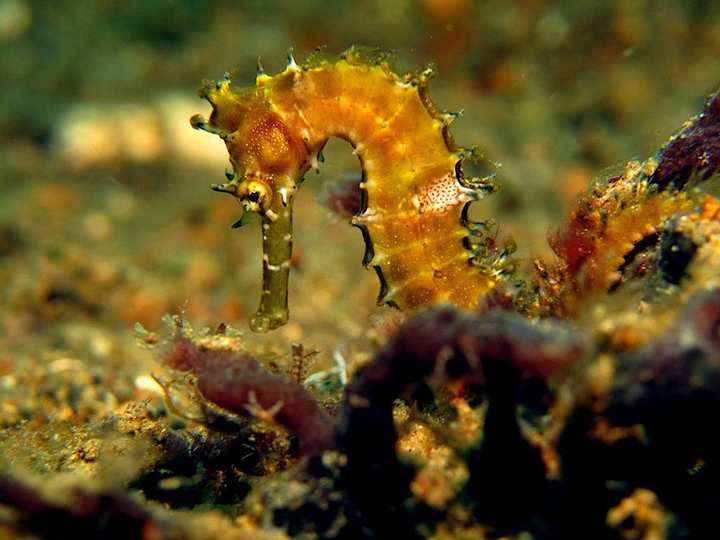Depicted in Greek mythology as a sea monster with the head and body of a horse and a dragon-like tail, the hippocampus or hippocamp, also called hippokampos, is a fascinating sea creature. It is commonly called as Seahorse.
Seahorses, however, are not mythical creatures as they are very real—and are actually endangered fish species.
Flagship species
Project Seahorse, a marine conservation group dedicated to securing healthy and well-managed marine ecosystems, consider seahorses as a flagship species for a wide range of marine conservation issues.
There are 46 known seahorse species, 10 of which naturally occur in the Philippines.
Of its total known species, 14 are threatened by fishing and habitat loss.
Project Seahorse estimates that around 70 million seahorses are caught globally in unmanaged fisheries activities each year.

Quirky fish
Seahorses have an uncommon trait wherein only the males get pregnant.
They are monogamous and form faithful pairs with lengthy parental care, live in temperate and tropical seas, and dwell on corals, seagrasses, mangroves and estuaries.
As such, they are important predators on bottom-dwelling animals.
While they are voracious predators, seahorses have no stomach or teeth. They feed by sucking their prey in through a tubular snout and pass it through an inefficient digestive system, the Project Seahorse said.
Seahorses can be edible. But interviews with fishers revealed that they are not palatable as food because of their bony plates rather than fleshy meat.
Nevertheless, seahorses are exploited as they fetch a good price.
They are exported either dried for use for traditional Chinese medicine (TCM), or curios/souvenirs, and caught live for ornaments or aquarium display.
In some Asian countries, they keep dried seahorses for use as folk medicine. They grill the dried seahorses and then pulverize them to be mixed in soup or water to treat ailments, especially asthma.
Source: Business Mirror


